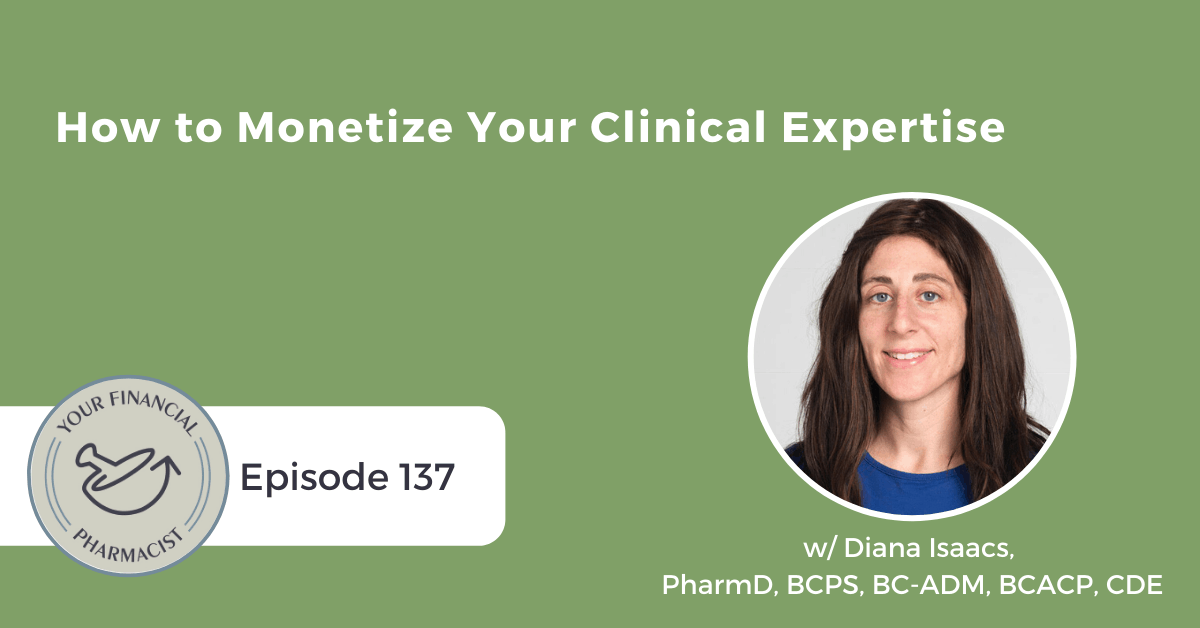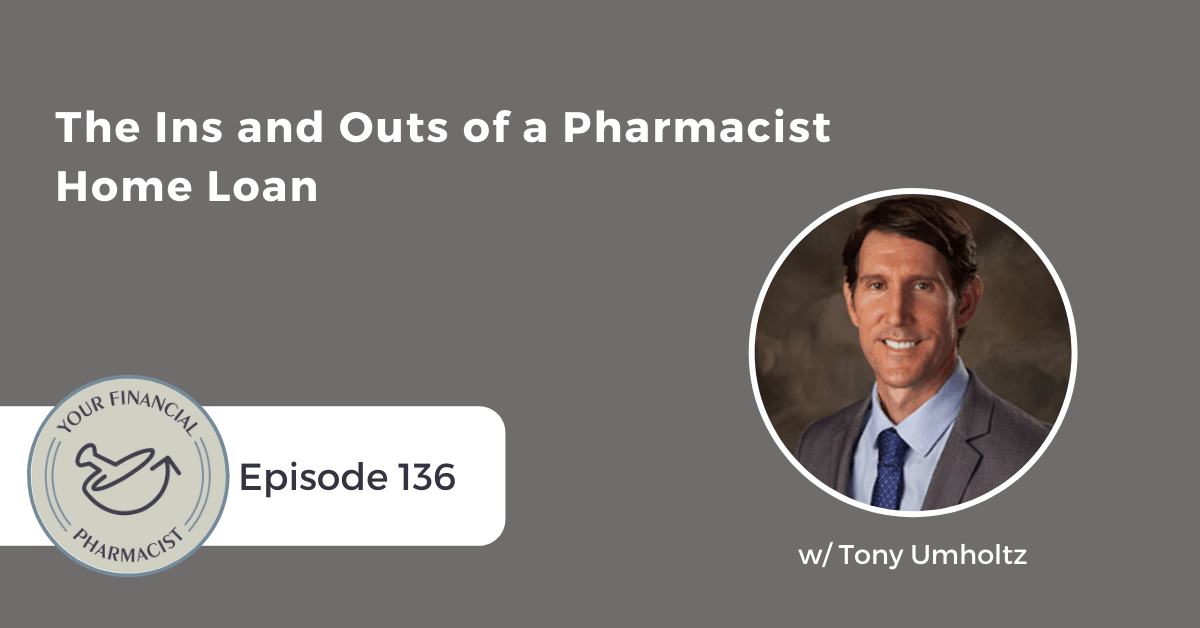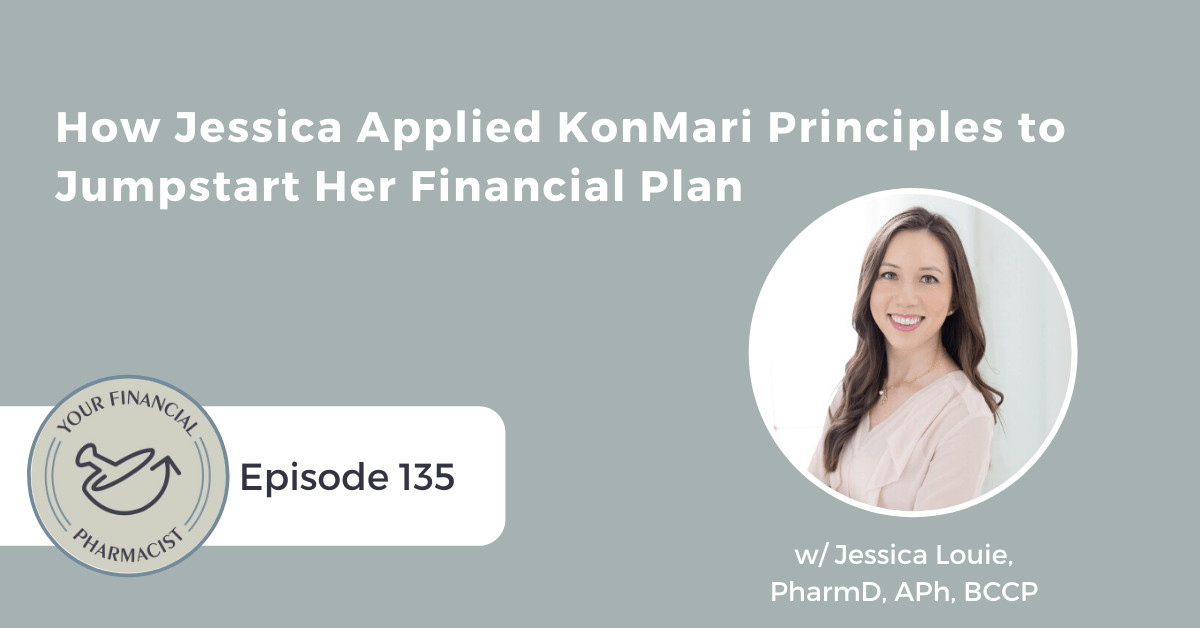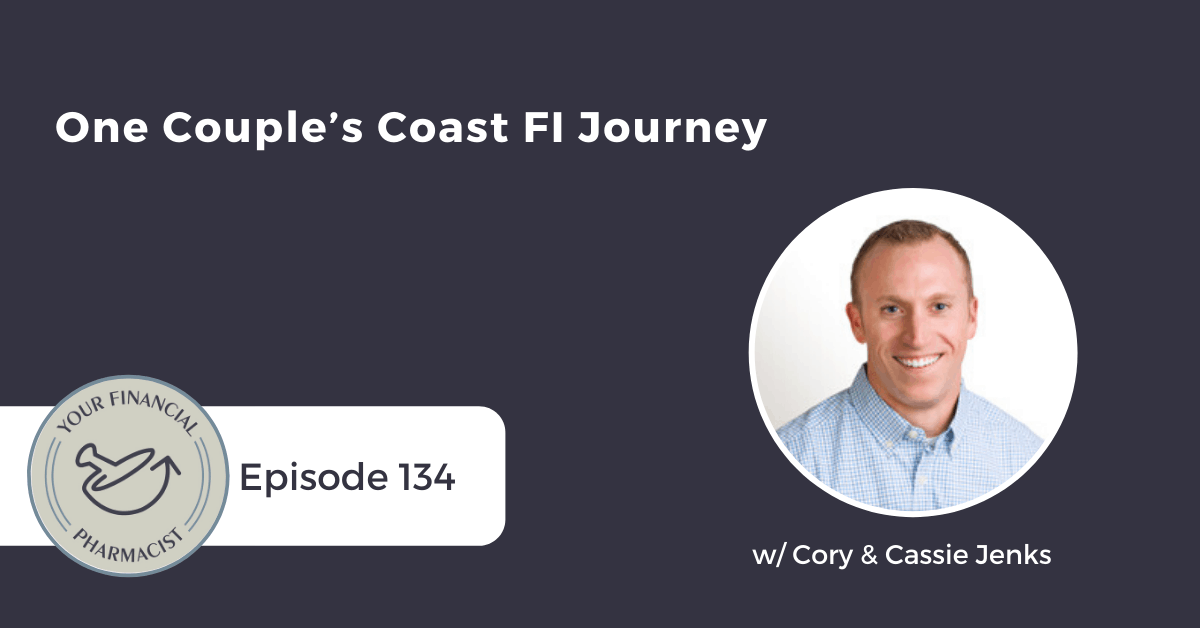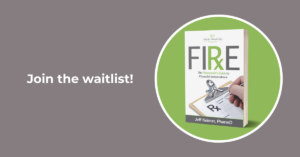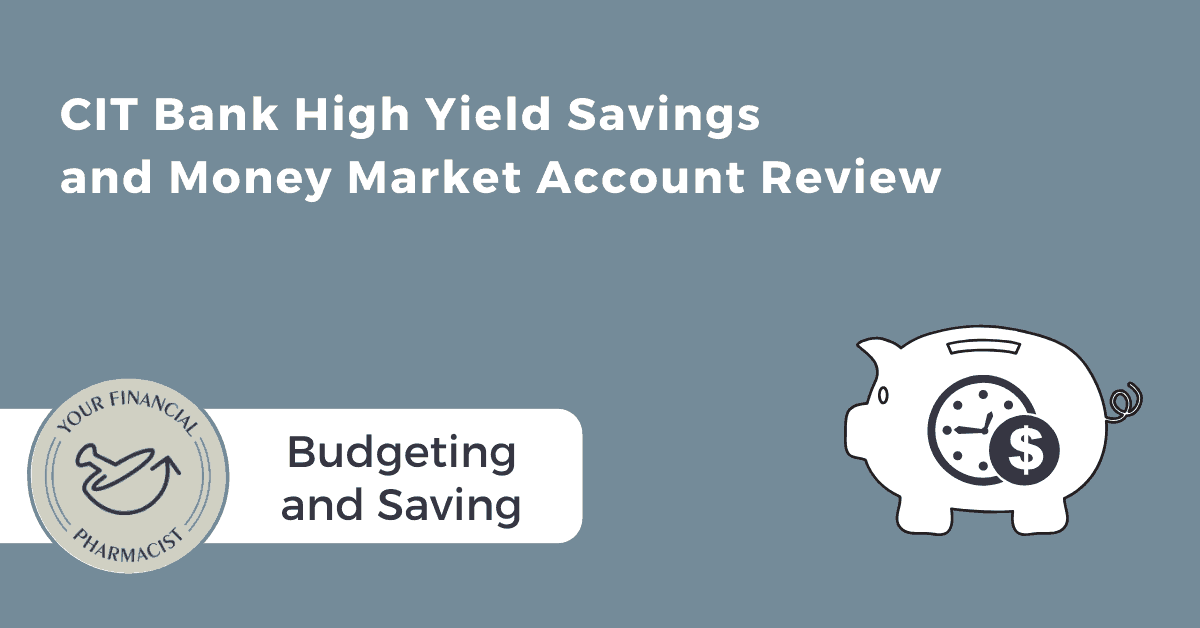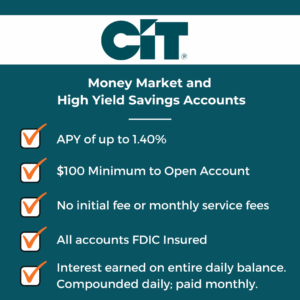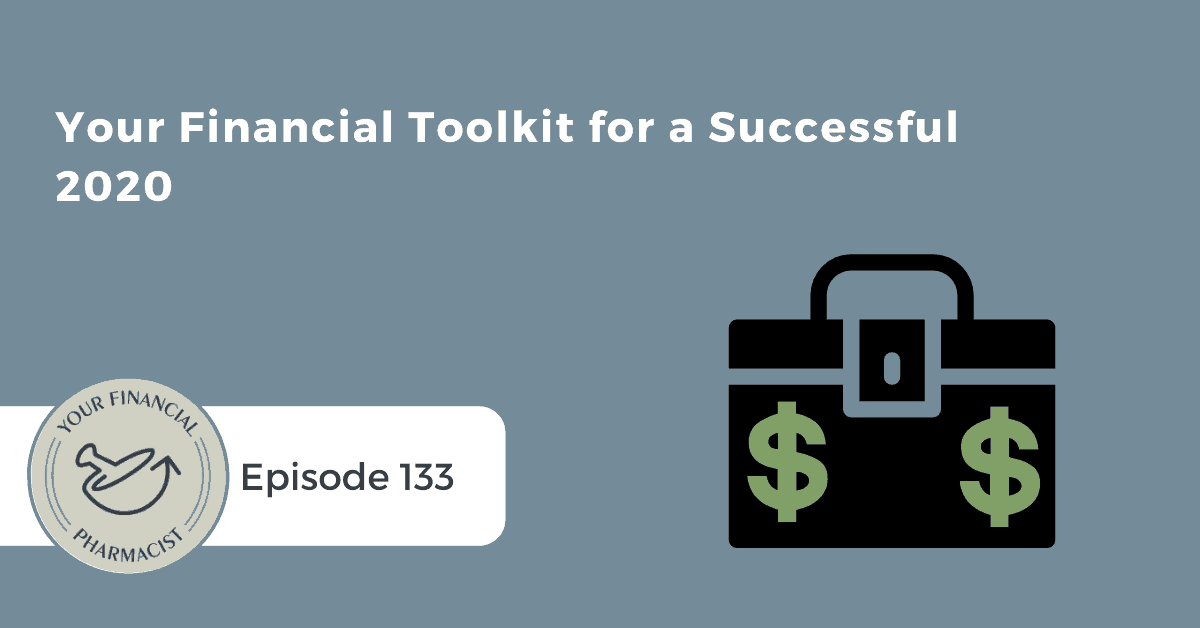How to Monetize Your Clinical Expertise
Diana Isaacs joins Tim Church on this side hustle edition to talk about her journey in becoming an expert in diabetes and how she has been able to monetize her clinical expertise through speaking engagements, advisory boards, consulting projects and CE articles.
About Today’s Guest
Diana Isaacs, PharmD, BCPS, BC-ADM, BCACP, CDE is the Continuous Glucose Monitoring (CGM) Program Coordinator and Endocrinology Clinical Pharmacy Specialist at the Cleveland Clinic Diabetes Center. Her role includes clinical practice, teaching, and research. She provides medication management and runs a robust CGM shared medical appointment program.
Summary
Diana Isaacs shares how she monetizes her clinical expertise in diabetes on this side hustle edition.
Diana’s training after graduating college was in pharmacy practice and ambulatory care. She gained clinical expertise and took additional training to receive certifications and specializations. She fell in love with diabetes and started working more and more in the field. She now works as a Continuous Glucose Monitoring (CGM) Program Coordinator and Endocrinology Clinical Pharmacy Specialist at the Cleveland Clinic Diabetes Center. Diana was recently awarded the 2020 AADE Diabetes Educator of the Year.
Her passion for diabetes is palpable and has allowed her to become an expert in the field. When she’s working at night on her side hustle as a clinical diabetes expert, she doesn’t feel as though she’s working but more that she’s doing a hobby she loves. She’s monetized her passion and expertise in several ways, including speaking engagements and presentations, advisory boards, consulting projects and CE articles and courses. She earns the most from honorariums which varies between $500 to $3,000/event. Advisory boards come in occasionally and bring in between $1,000 to $2,5000/board. Diana receives $500 to $4,000/CE article and if she works on a consulting project she usually earns $1,000 to $2,500.
The biggest reason for her success has been her willingness to say yes to opportunities and to reach out to organizations or conferences in which she’s interested in speaking.
Diana says it’s hard to quantify how many hours she works, however she makes it happen! Her side hustle has increased over time so she didn’t feel the brunt of working several additional hours on top of her day job at once. She has a very supportive husband that works part-time and is able to take on more with the children and household tasks. She works at night after her children go to bed but takes off Saturdays and Sundays when she can to make sure she’s present for her children and husband.
Mentioned on the Show
- Refinance Your Student Loans
- AADE (American Association of Diabetes Educators)
- American Diabetes Association
- Outliers: The Story of Success by Malcolm Gladwell
- Pharmacy Times
- Power-Pak CE
- Email Diana Isaacs: [email protected]
- Follow Diana on Twitter
Episode Transcript
Tim Church: Diana, thanks for stopping for and for being part of this side hustle edition.
Diana Isaacs: Oh, you’re welcome. Thanks so much for having me.
Tim Church: I first want to congratulate you on your recent award. And that is the 2020 AADE Diabetes Educator of the Year. And this is an award that honors a diabetes educator who has made a special contribution to the field through dedication, innovation, and sensitivity in patient care. Now Diana, this is a really big deal, and I wanted to ask you, what does winning this award mean to you?
Diana Isaacs: Oh, well thanks. Yeah, it’s been a really exciting year. Winning this award has been tremendous. I mean, I’m so grateful to be recognized for it. And it’s definitely opened up a lot of opportunities for me in terms of it almost seemed like overnight, people were like, oh, she’s an expert in diabetes. And it’s given me a lot of new opportunities to pursue.
Tim Church: That’s great. And when was the last time a pharmacist won this award? Because this isn’t something specific to pharmacists. This is really anybody in the diabetes space.
Diana Isaacs: Yeah, that’s one of the things I really love about the organization AADE, the American Association of Diabetes Educators, is that it is, it’s a multidisciplinary. You’ve got nurses, nurse practitioners, DAs, exercise physiologists, you’ve got dieticians, you’ve really got everybody. And so it’s just — it’s really special I think to be recognized by all the different disciplines. And in terms of the last time a pharmacist, I think when I looked it was like 12 years. So it definitely had been a long time.
Tim Church: That is so cool. And it’s really awesome to see you being recognized because as we’re going to jump into, you really have done a lot for diabetes in terms of your scholarship activities and a lot of the committees and things that you’ve been on. So I’m excited to jump into that. But obviously getting this award is not something that happened by accident. So I want you to talk a little bit about your career path.
Diana Isaacs: Yeah, sure. So let’s see. Going all the way back, I graduated from SIUE, it’s about 10 — actually exactly 10 years ago now. I did a pharmacy practice residency with an emphasis in ambulatory care at the Philadelphia VA. And then I was really fortunate to get my first position as a clinical assistant professor with a practice site at the VA, getting to manage diabetes. And I think through that, I really was able to gain clinical expertise in managing different types of patients and seeing different types of things. And I pursued my certifications, like my CDE and the BCEDMs, I’m board-certified in advanced diabetes management. And really, I think one of the things that really stands out is I say yes. I definitely say yes to different opportunities and also seeking out whenever there was an opportunity to be able to speak at a meeting, whether a local program or anything, really trying to grow myself professionally.
Tim Church: So a lot of those opportunities, did you have to be very intentional about getting? Were some of those given to you?
Diana Isaacs: So that is a great question. So yeah, the golden ticket, right, is when you get one of those emails that says, “Hey, will you do this? And we’ll pay you all this money, and we’d like you to present here and write this.” Those emails come sometimes, and they have fortunately come more often since getting this award, but no. For the most part, I sought things out. When I saw that a meeting was accepting abstracts to be able to speak, I drew up an abstract and I submitted it. I, you know, submitted lots of proposals for lots of different things. I worked really, really hard. And some of the things stuck, and many times, they didn’t get accepted. But I kind of just kept trying.
Tim Church: And did you have any failures along the way when you submitted those proposals?
Diana Isaacs: Well, I don’t like to think of it as failure, right? Because you’re trying to think of it as you’re growing. But yeah, I like to think of it as like I throw 100 darts at a board, and two of them stick. And that’s great. I’ll pursue those two things. So yeah, I feel like I apply for lots of things. I’ve tried to really do a lot of different things and yeah, sometimes I don’t make it, they choose someone else, I don’t get it this time, but I just kind of keep trying. And I really try to keep my ears open for opportunities. That’s something I’ve been pretty good about paying attention, you know, sometimes you get those emails where it’s like, you can apply for this. Like for example, with the American Diabetes Association, they have these special interest groups. And I’ve been wanting to get involved with ADA, and so I applied for that. And I ended up being appointed as communication director for the pregnancy and reproductive health group. And that was just an opportunity that hey, I paid attention to my email, I filled out the application, I submitted it. And it worked out. So I think, you know, a lot of it is reading your emails and seeing what opportunities are out there.
Tim Church: At what point in your career did you realize that you had become an expert and really had authority in this space?
Diana Isaacs: So I don’t — I guess I’m still growing, and I like to think I’m still definitely growing and evolving and there’s so much to learn with diabetes that I don’t know if anyone is a full expert. But I think, you know, definitely earning this award this year has solidified some of my confidence. And I think over — especially in my current position, so right now, I’m at the Cleveland Clinic Diabetes Center. And I think in this space, I see such complex cases. I get to do so many cool things here that I think I just realized, you know, when I interact with other people that I am seeing a lot more, a lot more diverse things that I’m becoming an expert, I guess you could say.
Tim Church: So what would be some of the examples of complex cases or things that maybe most pharmacists kind of in an amb-care setting may not see every day?
Diana Isaacs: Yeah, so I get to do a lot of work with the post-kidney transplant population. And that’s a lot of fun. So there, we do a bunch of kidney transplants there. And unfortunately, our patients were kind of falling through the cracks. That was a need when I came here, that they weren’t getting good glycemic management right after that transplant. It was hard to get into endocrinology. So that’s a service that I took on. And now I see a lot of those patients. And so it’s just, it’s very interesting because they’re on high dose steroids, they’re tapering over a month’s time, they just had a transplant so they’re acutely sick. Many of them, even if they didn’t have diabetes before, now they have steroid-induced hyperglycemia, and it’s really an art to it because there’s no specific protocols. It’s really every person’s different, and you have to very closely manage it. And then in addition to that, sometimes you see the pancreas-kidney transplant. Like I have a patient this week, she had it, and you know, you would hope, right, the dream is that if you get a pancreas transplanted, you don’t need insulin anymore. But it doesn’t always work like that. They call it like angry pancreas. Like it takes some time for that new pancreas to adjust. So then we have her on Metformin and like we’re trying to see, are we doing a DPP4 inhibitor and what else are we going to do? And so it’s just — man, it’s a lot of cool stuff, a lot of cancer patients, a lot of just everything, like post-bariatric surgery, hypoglycemia, people doing keto and de-escalating therapy, lots of CGM, diabetes technology, insulin pumps, just lots of cool stuff here.
Tim Church: So it sounds like that the providers are how they come in through the clinic, they’re like if they’re complex or it’s going to be difficult, we just send them to Diana. Is that pretty close to how it works?
Diana Isaacs: So I am so fortunate. I work with like the most amazing doctors, and I have an amazing, amazing team. So what I try to do when coming here — because I was the first full-time pharmacist put into the diabetes center — was I tried to find where would I be most useful? And some of the areas I recognized that were one, we were underutilizing diabetes technology, so like insulin pump adjustments and getting more patients on CGM. And then the kidney transplant need was really two areas where I decided that I would really be best utilized, and so those are kind of niches that I’ve I guess developed. But yeah, I try to be helpful wherever I can for the team.
Tim Church: That’s really cool, and I think those are obviously niche areas within diabetes itself, but through the organization that you work for, obviously if those are very frequent types of patients that are coming in, there’s certainly going to be a need. And I think that’s really cool how you positioned yourself to basically say, what are the needs out there and how can I best be a part of this service and impact patient care in that way? So I think that’s really cool the approach that you took.
Diana Isaacs: Thanks. Yeah, and I try — you know, a lot of times, pharmacists will come and ask me what they can do and how they can get involved, and I think it’s really every place is unique and it’s about assessing the needs and making sure you’re not stepping on other people’s toes but you’re adding value to the team.
Tim Church: So besides kind of positioning yourself as an expert by taking on very difficult cases, very unique cases that many people may not see all the time, you know, one of the things I thought about prior to our interview was the book “Outliers” by Malcolm Gladwell. And essentially, one of the conclusions of that book is that in order to become an expert, you need 10,000 hours. So a lot of people out there — obviously you don’t become an expert, you don’t become a member of the Beatles like overnight. The Beatles don’t become The Beatles overnight. It takes a lot of time and practice in order to get to that point. So what do you think about that in the context of your personal journey?
Diana Isaacs: Yeah, that’s a great point. And yeah, hard work is required. I mean, I work hard. But the thing is, it’s not boring or tedious. I just, like I really love diabetes. And I love that I can use my skills in diabetes to be able to help people. Almost 10% of people now have diabetes. So wherever I am, I’m able to make an impact and to directly help people. And so like for me, I love doing it so much that I don’t think of it as work. Like if I am working on a project or I’ll do this stuff in the evenings, and I don’t really think about it because I’m enjoying doing it. But absolutely, like the hard work is necessary. And I think on one hand, that should be inspiring because it’s not that you have to have like some special secret skill or talent. Like every person or every pharmacist should know, like if they work hard enough in a certain area, they can become a clinical expert.
Tim Church: And I think too — and I think obviously, you’ve already kind of talked about this, but just that repetition of seeing the number of patients over and over and over, and you start to develop certain patterns. You know, obviously you’re going to have some complex cases that you’ve never seen before, but it’s almost kind of like it adds to the — your own repertoire of knowing OK, I’ve seen a patient like this in the past and this is how he or she has responded. And I’ve kind of instilled that in the training programs is when we take residents — because for those that don’t know, I also do primarily diabetes management, but I’m always pushing the residents and students to really see as many different types of patients as possible because that repetition is so key, even if it seems monotonous and tedious at the time.
Diana Isaacs: Yeah, and I think the great thing about kind of the ambulatory care environment too is you’re interacting, you’re communicating with different types of people. So you can always learn from every person. And so that’s really the art of it that makes it really unique and something — I have a lot of trainees, a lot of residents and students that I work with. And that’s something, you know, you can have two exact same clinical situations but what you do may be different depending on like the patient’s attitudes and other factors. So yeah, that communication and, like you said, repetition, is very helpful for navigating different situations.
Tim Church: So who or what really inspired you to become an expert? I can tell like just from your voice, obviously this is where you’re already passionate about. But is there anyone who inspired you to basically continue to achieve, continue to get to the next level?
Diana Isaacs: Yeah. So I want to highlight, so Jess Kerr, who is faculty at SIUE where I went to pharmacy school, was very inspiring. She was faculty and had a practice site — or still has a practice site at the VA. And I wanted to do what she did. I guess that passion I saw, she had that passion for helping people and I really wanted — she seemed so happy — and I really wanted to be that. I was very fortunate to get a position like that. I think something else that actually stands out is my math teacher, actually in high school. I had a really bad attitude about math. And I was like, fine, like this is too hard. Like I’m just getting C’s, like I don’t care. This is just way too hard, I don’t feel like doing it. But she invested all this time in me. And she encouraged me to have a positive mental attitude, PMA, and she said things like, “Dream it. Believe it. Achieve it.” And that really shifted things. Like I learned that my attitude really dictates how situations will turn out. And just through changing my mindset, having a positive attitude, things can go really well. So I turned myself around, I went from C’s to A’s. And I think that that message really stuck with me in a lot of different areas, not just pharmacy and diabetes but in other areas of my life too.
Tim Church: That’s really cool. And I think that a lot of people, they would not be where they are unless they heard some message, received some encouragement from somebody. So that’s cool. And I think it’s great that you highlighted those individuals. So obviously you’ve reached this expert status in managing diabetes and along with that comes some engagements and proposals and things where you can really show off those skills but also help other clinicians help patients. So talk about some of the ways that you were able to start monetizing your clinical expertise.
Diana Isaacs: Yeah. So it’s been exciting because I’ve done a lot of things over my career for free, put a lot of sweat and tears — not usually tears. But yeah, now I’m getting paid to actually speak and things like that. And I love — it happens to be that I love giving presentations. And so that now, you know, I get paid to give presentations. And part of actually what I’m doing with this Educator of the Year is I get to give presentations and then beyond the five that I will give and that I kind of already received an award for, I can do additional ones where they pay me and I’ve been able to set my price. And so that’s been exciting. And then another side benefit has been that industry has been interested in me too. So now I’m speaking for DexCom as well as I’m on the speakers bureau for Novo and for Zerus, and so that is very exciting.
Tim Church: So take a step back for the award, the Diabetes Educator of the Year, they’re already guaranteeing you five speaking spots? And are those individual speaking gigs, those are paid for? Is it one lump sum that they’re giving you?
Diana Isaacs: Yeah, so what happened is I got $5,000 up front for that. And in that, I agreed to speak at five places, which I got to choose — or places could request me, and then I got to choose from the list of people that requested me. And then beyond that five, then additional places can request me. But they won’t get the financial assistance. So they would have to pay for my travel and then pay for my honorarium on their own.
Tim Church: So besides speaking, what are some of the other ways you’ve been able to monetize?
Diana Isaacs: Yeah, so things like CE articles, so places like Pharmacy Times, Power Pack, they will basically — they will pay you to write CE articles or like give webinars. So that’s one thing I’ve been able to do. Also, like in the webinar and course development — so I actually do a lot of stuff with AADE. There’s a whole CGM course. And it’s going to be turning into a certificate. But I was involved in that. And so that’s led to a lot of honorariums along the way. We even most recently created videos for it on how to counsel on CGM. And so there’s been a good number of honorariums for that as well.
Tim Church: That’s great. So can you break down kind of the different ways you’re earning and what they would typically provide in terms of an honorarium? And that could be like a range.
Diana Isaacs: Yeah, so it really varies a lot from place to place. Like some places, you do a local program, and you speak, and you get $1,500. And that’s to cover — it usually would be like a one-hour program. Depending on the company, sometimes they’ll give you the slides. And sometimes, they’ll have you pick from slides or they’ll let you put together slides, depending on how much freedom you have. Usually, many places will pay — if it’s not done that way, they’ll pay you an hourly rate and then they will pay for presentation development. So like usually, that honorarium ranges from I would say from $200-300 an hour. And so that would, you know, if it takes 10 hours to prepare, say that would be $2,500. And then the presentation itself usually will be like a $2,000 honorarium as well. So I would say like usually, when I speak, I’ll get anywhere form like $1,000 to $5,000. $5,000 being the best and not usually so normal. But that’s kind of a range. And then they pay for travel and hotel and all that, flight and all that good stuff. Recently, I was asked to speak as part of this diabetes program, which is training people for CDE. And that, I think we agreed on like $600 per hour of speaking. But that wouldn’t be prep time, that would probably just be like the time. So if I speak for five hours, then it’s $3,000. So that’s kind of for the speaking stuff, that’s usually how it works out.
Tim Church: And then have you been able to cross — I mean, obviously with AADE, ADA, those are multidisciplinary organizations — but have you gone and done presentations specifically for physicians, for nurse practitioners, physician assistants?
Diana Isaacs: Yes, so I was just recently asked to speak for like the dietician organization. So I think that’s beginning to happen. I was asked to speak also for ADA post-grad sessions, which is in early February. So that’s exciting because that’s an organization, there’s a lot more physicians in that organization. And of course, I do a lot of speaking AADE. So I think I’m starting to tap into these other organizations as well.
Tim Church: You mentioned to me before we jumped on the call that besides speaking, besides CE articles, some of the other ways you’ve been able to monetize have been being a part of advisory boards and then also consulting. Can you talk a little bit about that?
Diana Isaacs: Oh yeah. Advisory boards are like the greatest thing in the world. They’re usually like these — it’ll be like four hours and you’ll get paid like $250 an hour, plus if there was any travel. But the best is when they’re local, and you just like go for four hours and you get $1,000. Those are wonderful. I love when those happen. Other things, like for consulting, just different types of like writing or I get asked a lot of stuff about CGM type of stuff. Like now, I’ll be working on a supplement for the Diabetes Educator for InPen by Companion Medical, so stuff like that pays. Oh, recently I got asked to do this Medscape thing, which that sounds actually really cool. It’s like about time and range. And they’re — I guess it’s more kind of like an interview. They asked me to pick a nurse that I like working with, so I picked my favorite nurse. And we’re going to go I guess to like New York to film this brief thing. But that was like another kind of cool thing that I was like, oh, wow. That’s interesting. So all that stuff’s been cool. And I guess one of the things I’ve learned is, you know, I’ve done lots of things for free in my life. And I love doing it. So sometimes, it’s like easy to get to be like, oh yeah, I’ll just do this. But recently, I’ve tried to set my boundaries that hey, if someone’s asking for a good amount of my time, to make sure that I am getting paid fairly for my amount of time.
Tim Church: Sure, I mean, I think that’s absolutely reasonable. And you’ve done a lot of the things in the past to get to the point where you are where you weren’t necessarily compensated. But I think it’s incredible all the different ways you’ve been able to monetize. And obviously, along the way, you’re providing a lot of value, whether that be organizations or education that ultimately gets in the hands of patients itself, which is really cool. Can you break down in terms of percentages — so all of these different things that you’re doing to monetize — can you break down kind of what is the highest in terms of bringing in the revenue? Without specific amounts, just kind of what percentages does speaking bring in versus advisory boards, consulting, CE, etc.?
Diana Isaacs: So I think speaking definitely brings in — if it’s like a big program where — like I’ll give you another example. Like at AADE, I had a bunch of presentations, but then I had this one presentation, it was sponsored by Abbott. And so the honorarium was like $2,000. So that’s something that just brings in money, I feel like quickly, especially if it’s a topic that I’m pretty comfortable with. Like another example was a CE article that I did, it was also on CGM, and that paid $4,000. And so those are topics I’m very comfortable with. So those are easy and much faster, I guess, to earn the money. Other things, like writing sometimes. You know, writing can take awhile, so especially if it’s a topic you’re less familiar with. So now I try to stay in the diabetes realm. But I actually, like last year, I wrote an article about hyperhidrosis, which was not as familiar to me as other disease states. So that one took a little bit more time. So I guess what I’m saying is it’s hard to completely break it down. But I think for sure speaking, advisory boards pay a lot, but those are really unpredictable. So you know, I could have two advisory boards in one month or I can go almost a year without an advisory board. It’s just, it really depends on the needs of the company and what area they’re targeting and everything. So I think it just really varies. Another thing that brings in revenue, though, which is kind of cool, is speaker training. So whenever you speak for one of these companies, they want you to get trained. And so like that, that’s amazing because you get your hourly rate for a bunch of hours and you’re not presenting or anything, you’re just learning. And so that’s pretty cool.
Tim Church: How does that work?
Diana Isaacs: Yeah, so like with Dexcom, I was really fortunate because I missed the original training, and two people came out to me and like just trained me for four hours. And like I earned $1,000 and it was amazing. Other ones, like I’ve been invited now for this year to go to a Dexcom and to a Novo training. And so those, I’ll be flying out to like to Florida in the winter, so it’s not like it’s so bad. I think the other one’s California. But it’s just basically like a day, and they’ll be paid an hourly rate. And the good thing about those is it will be with other people on their speakers bureau. So the opportunity to interact — but those are really interesting because you learn more about their product. And so I mean, I just find it’s incredibly helpful and interesting, and I get to earn money. So it’s really awe — I mean, it’s really cool to get to do that kind of stuff.
Tim Church: Yeah, it sounds like you’re getting just a tremendous amount of opportunities, which is really cool. Would you say that now at the point of where you are that most of these opportunities are already being asked of you where you’re not having to reach out as much anymore to get them in motion?
Diana Isaacs: So yes and no. So yeah, like fortunately with the pharma stuff, that’s been really exciting. But I think it goes both ways because I was pretty interested in Zerus and definitely let them know that I was interested in being a consultant for them. I’m definitely getting asked more, but I’ll tell you, there’s still things I apply for. So I think it depends the caliber of what it is. I am, fortunately, getting asked a lot more. But there’s certain things that I — I’ll give you an example, OK? So this isn’t so like — this makes sense. So like ADA Standards of Care, I would like love more than anything to be on the committee that develops the standards of care, OK? So that’s something you have to apply for. So that is something that I hope to apply for and if I were to get selected for something like that, that would be like a career dream. So I think it goes both ways, maybe my dreams are even higher now than they were before. But yeah, I still, I’m open to new opportunities and still — will still apply for things.
Tim Church: So looking back, now that you’ve obviously been able to monetize, you’ve been able to bring in extra income, what are you doing with the additional income that you’re bringing in with your side hustle?
Diana Isaacs: That is also a great question. So honestly, I just live my — I don’t want to stress about money, and I think bringing in the extra money allows me to live a very comfortable life without stressing. I work very, very full-time between my regular job and all these extra consulting opportunities. My husband, fortunately, is able to work part-time, which is good because then someone is home more for the kids and I feel like we have more balance, and he’s able to take care of some more of the stuff at home. So I think for us, it’s just really about not having this stress, being able to buy what we want, and then whatever extra, college funds, all that good stuff.
Tim Church: Cool. So how much time do you think in most weeks you’re spending kind of on consulting and all these other activities that are outside of your scope of your full-time positon?
Diana Isaacs: Yeah, that’s hard to quantify. I will say every Saturday, I completely disconnect and I am not using the phone, I’m not working, I’m like really just with the family. So I always have that day. And even Sundays, I try to really make family day. And I’m fortunate that I have a position that’s Monday through Friday so that I have my weekends off. I try really hard to do my extra work in the evenings when my kids go to sleep and like evening-weekend — or weekend-evenings. I try not to take too much time away when my kids are awake. It’s definitely a balancing act. I feel like I make it work. I don’t know. Maybe it seems like I work a lot, but I try — somehow, it all works.
Tim Church: I was going to ask you, what other tips do you have? Because I mean, you’re doing so much, you have a family, I mean, I think a lot of people when they think about the thought of taking on something in addition to their full-time job, it almost seems like it’s impossible.
Diana Isaacs: So I guess it’s built up like over time, so it hasn’t felt like oh, it’s this massive thing all at once except when I have an article that’s due and I waited until the last second to do it, which isn’t great. But I don’t know, I just, I don’t do — like I don’t watch TV really. I don’t go to movies, I try to minimize distractions. I’d like to say I’m perfect about social media, but I definitely like to post things on Twitter and stuff. But I try to really minimize the outside distractions. And when I am home with my family to really focus on my kids and not be distracted. And that way, when they go to bed, like I can really devote my time, you know, like whatever, from 8:30-10 on whatever I want to work on. So I just — and I think I just love what I do. I just love it so much that for me, it’s like my hobby, right? Like if someone else likes to paint or likes to do whatever, they would make time for that. So for me, this is kind of like my hobby. I just really enjoy it. And so I just — like I make time for it.
Tim Church: And it sounds like too that it sounds like your husband is very supportive in you doing these extra activities and things like that. And obviously, you said it makes it a little bit easier that he’s part-time. But would you say that he’s played a big role for you to be successful with all these other ventures?
Diana Isaacs: Oh my gosh, yes. Yeah. I mean, he’s the only reason that I can do what I do. He’s like really good at managing the kids, going grocery shopping, like he’s really on top of it, but also I have cleaning help. Like that’s a must. I definitely, I have cleaning help, a lot of cleaning help. So that’s another thing I use my money for lots of cleaning help. But yeah, I mean, you have to have that support. And he knows that I love doing this stuff, so he is supportive as long as I’m not out of town too much. And that’s the part I have to balance because all these speaking gigs, trying to just make sure — I like to be home on the weekends when I can and stuff. But yeah, it’s a balancing act, but it’s fun.
Tim Church: Well, Diana, this has been a great time. And obviously, it’s just cool to hear your passion in your voice. I mean, obviously, this is an area where you’ve become an expert and be able to impact not only clinicians but patients just in your full-time job but with all the work that you do. So what tips or suggestions would you have for others who want to become an expert in a particular clinical area?
Diana Isaacs: So this is going to go against all that burnout, resiliency talk that you hear. But just say yes. Like this whole thing about saying no to avoid burnout, I just, I disagree with it. And I think in order to be an expert, to have new opportunities, you’ve got to say yes. You’ve got to open yourself up to that because you never know, like when you say no because you’re worried, oh, it might overwhelm you, what you’re going to miss out on. And the thing is when you say no a lot, that really closes doors and people don’t want to ask you again. So I just, I like really encourage people to say yes or at least really, really think about it before being so quick to say no. And then the other thing is just look for those opportunities. Don’t expect that people are going to hand you things. You do have to work hard. It doesn’t happen overnight, but that’s OK. And just look for new opportunities.
Tim Church: Diana, if somebody wants to learn more about you and what you’re doing, what’s the best way to reach out?
Diana Isaacs: Yeah, so you can email me, you can find me on Twitter, @DianaMIsaacs. Yeah, I’d be happy to chat with anyone who’s interested in talking. So yeah, feel free to shoot me an email. If we’re going to one of the same meetings, we can meet up there. So yeah, happy to connect with anyone who’s interested.
Tim Church: Diana, thank you so much for coming on the podcast, sharing your story and your tips and suggestions. It’s been a lot of fun.
Diana Isaacs: Oh, you’re very welcome. Thank you so much for having me.
Current Student Loan Refinance Offers
[wptb id="15454" not found ]Recent Posts
[pt_view id=”f651872qnv”]

